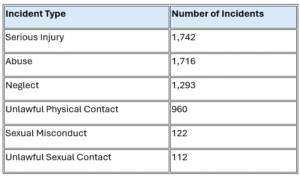Our take on disability employment data and theField.jobs
November 24, 2022

Disability employment means a lot to us at Empathia Group. Much of our team has spent time in Australian Disability Enterprises (ADE) and witnessed the transformational impact of being given a fair go.
Disability employment has re-entered the spotlight recently with an enquiry into Disability Employment Services (DES) as part of the Disability Royal Commission, along with the launch of a promising new disability-focused jobs website, the Field, co-founded by Dylan Alcott and funded by the Department of Social Services.
While we don’t mind passing on the latest industry news, we’re always more interested in investigating the data behind it to understand what’s really happening.
A table sure to terrify scheme actuaries
Keen readers of the NDIS quarterly report will notice a quiet table tucked away in the back. The table below shows NDIS participant employment rates by age group. R1 and R2 denote reassessment after the first and second plan.
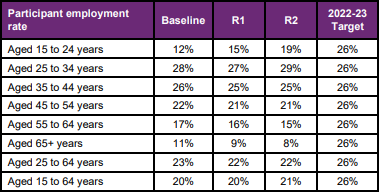
Source: NDIS Quarterly Report
What immediately jumps out is that in core age groups, an NDIS plan will reduce your chances of maintaining employment.
We don’t think the NDIS is disabling or people stop working once they gain support. More likely, we believe this is an artefact of cohort structure and the impact of aging. However, this demonstrates that for core groups of people, significant investment in capacity building doesn’t appear to have the profound effects expected or likely modelled by the productivity commission.
A perspective on ABS data
The ABS maintains solid data on disability employment across several cohort strategies. Therefore, we’ve pulled together a highly simplified interpretation to demonstrate the size of the employment gap for key groups. The following chart reflects the full-time employment rate by reported disability and gender:
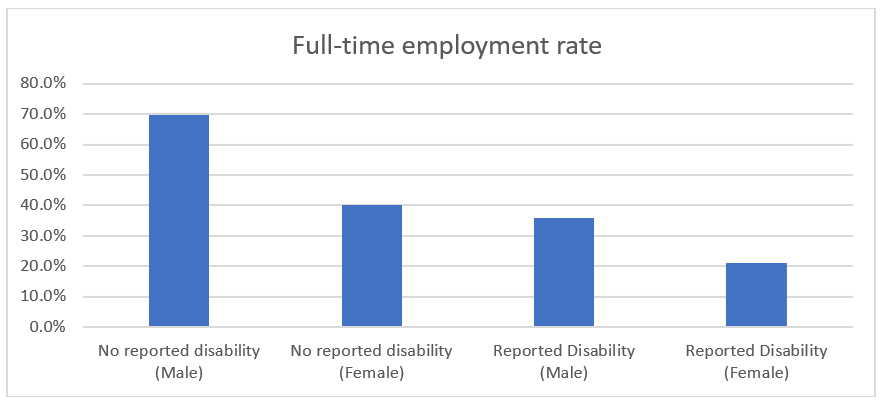
Source: ABS
In the two gender cohorts shown, you’ll see that the full-time participation rate for people with disability is about 50% of those who do not report a disability. Of course, many people with disability do not want to work full-time, preferring reduced part-time or casual work hours. Regardless, this chart paints a bleak picture of how far we have to go to close the opportunity gap for people with disability.
At Empathia Group, we are most interested in people utilising the NDIS – a somewhat less-known feature of disability employment. The chart below shows full-time employment by disability type (note: ABS data doesn’t have the same disability categorisations as the NDIS, i.e., the exclusion of Autism from this data set).
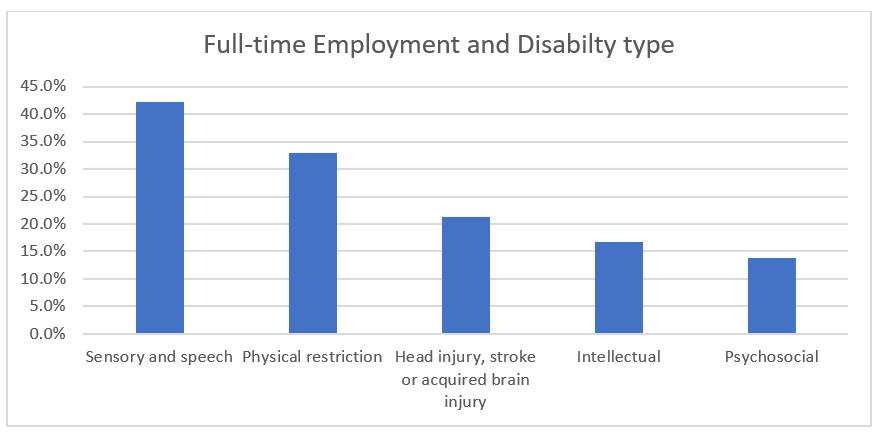
Source: ABS
The striking thing about this figure is the size of the gaps between disability types. For example, intellectual disability has a 16.8% full-time employment rate, and psychosocial disability has 13.8%. So, while strong arguments can be made for desire and capability, much of this gap is driven by opportunity. We know this because Fighting Chance and many other organisations are doing fantastic work to solve this problem.
Our key objective here is to ask our readers, “are we doing everything we can to create meaningful jobs that fully engage people with disability?”
While we should consider employment participation of any kind, we firmly believe that the full-time employment rate clearly shows how much work is required to provide people with intellectual and psychosocial disability a fair opportunity.
So, what about the Field?
Noting that disability employment has been a focal point for some time, we were excited to see the launch of the Field.
In their own words, the Field is:
“… here to revolutionise employment. We exist to knock down employment barriers, and connect people with disability who want to work with organisations that want to hire more inclusively.”
Source: the Field
The revolutionisation of employment is an important pursuit, so we dove in to see how they do this.
What’s different about it?
The Field’s website functions like other job platforms with some significant differences.
Firstly, their user interface is high quality and as good, if not better, than most mainstream job platforms. Candidates can easily search for jobs, and employers can quickly post jobs with strong data validation for analysis and reporting.
The Field stands with its strong commitment to accessibility and inclusion. However, we don’t mean this in the sense of many organisations’ fluffy “commitment to accessibility and inclusion”, as the Field’s team has actually done something about it.
The Field provides comprehensive tools for enabling employers to demonstrate their accessibility using a suite of descriptors, images, and video content.
Accessibility features
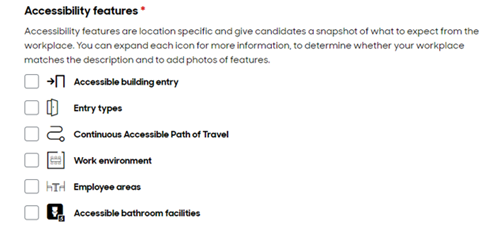
These features are compressed at the end of a job listing so candidates can easily see what navigating their physical work environment might be like.
We believe this feature will drive two essential behaviours. Firstly, employers are strongly encouraged to consider how people with disability navigate their workplace, which may generate some empathy “aha” moments that result in positive change.
Secondly, this approach will go some way to minimise the anxiety people with disability may experience when submitting job applications, and not knowing whether the workplace is as accessible as often promoted on Seek ads.
The second feature is a series of “badges” employers receive when they complete certification for disability-inclusive hiring and employment practices – this is huge considering around half of all people with disability in mainstream employment (who are surveyed) report discrimination from employers or colleagues. The Field will likely act on this by strongly incentivising employers to demonstrate their commitment to inclusive employment practices through a badge system.
This badge system could become the most effective and credible way for employers to signal a real commitment to inclusion outside of mere words.
Badges
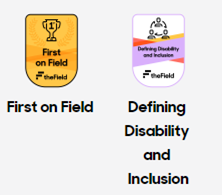
Undoubtedly, the Field will have some teething issues, especially as recruitment platforms integrate into it without a view to creating genuine inclusion. In fact, when we took some time to review the jobs on the Field we found some employers making a genuine commitment, with detailed explanations of their accessibility features (complete with photos) and adjustment principles. In contrast, other employers have uploaded their advertisements unmodified from the original source.
An example of an organisation that takes this seriously
Below is a profile from a major disability provider that has offered its head office, despite the role requiring staff to support individuals in the community with varied needs:

And here is the big issue with the platform in its current state. Many of the ~250 jobs listed do not take advantage of the bespoke features that we believe will genuinely make a difference to people with disability. While it is unlikely that this will do any harm, it’s conflicting with the platform’s most prominent point of difference.
Let’s wrap it up
Consider us impressed. We like the Field; it contains real innovation neatly presented in a visually appealing user experience. The platform will likely make a genuine impact, and we applaud Dylan Alcott, his co-founders, and his team for the successful launch.
It is also important to consider the needs of people with intellectual and psychosocial disability as this promising platform gains momentum. While we certainly don’t want to detract from its success, we’re yet to see a supported work environment with similar fanfare.
Many supported work environments continue to report troubling financial statements or are making clear signals to exit the space. If you’re looking for assistance with the viability of your supported workplace, feel free to book a free 30 minute call.
Share this article:
Continue reading Empathia Insights
Kafkaesque: The Moral Hazard at the Heart of SIL
Kafkaesque: The Moral Hazard at the Heart of SIL Dean Bowman November 18, 2025 Supported Independent Living The Federal Court's...

